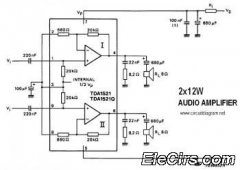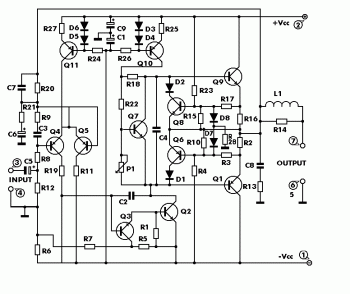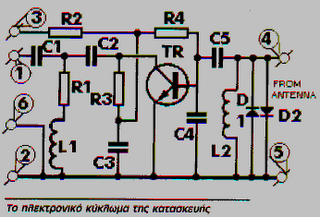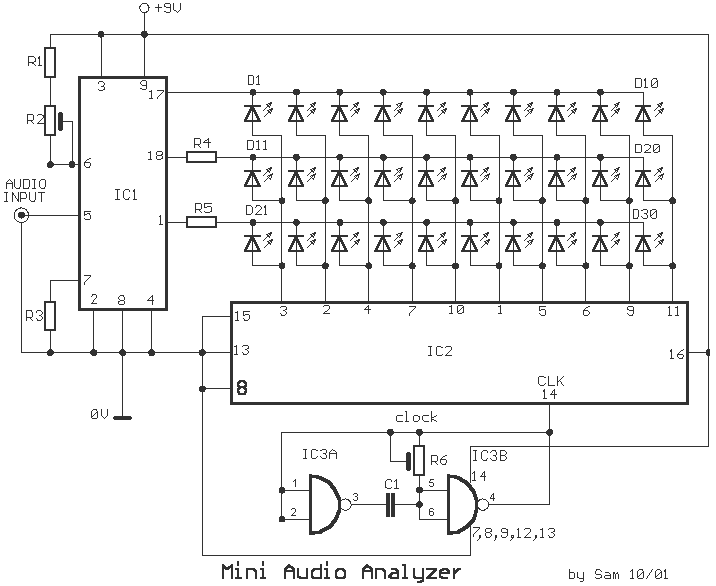
40W audio amplifier
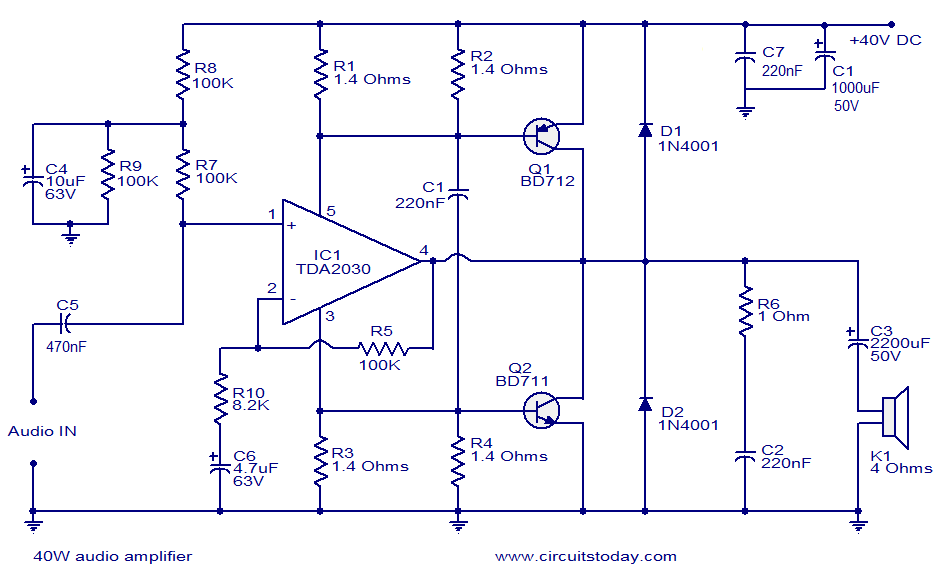
This is a highly effective 40W power amplifier design utilizing the TDA2030 integrated circuit and two transistors. The circuit consists of only a few components and does not necessitate a dual power supply. The input signal is connected to the non-inverting input of the TDA2030 through the DC decoupling capacitor C5. The TDA2030 handles the majority of the voltage amplification. As the TDA2030 performs amplification, the power supply current to the IC fluctuates in response to the input signal. These fluctuations in the positive supply pin are transmitted to the base of transistor Q1, while variations in the negative supply pin are sent to the base of transistor Q2. The primary current amplification is achieved through these two complementary transistors.
The described 40W power amplifier circuit leverages the TDA2030, a robust audio amplifier IC known for its ability to deliver high output power with minimal distortion. The circuit design is streamlined, utilizing a limited number of components, which enhances reliability and ease of assembly. The absence of a dual power supply simplifies the design, making it suitable for various applications where space and cost are considerations.
The input signal is coupled to the TDA2030's non-inverting input via a DC decoupling capacitor (C5), which blocks any DC offset present in the input signal, allowing only the AC component to pass through. This ensures that the amplifier operates effectively without biasing issues. The TDA2030 amplifies the voltage of the incoming signal, and as it does so, the current drawn from the power supply varies dynamically based on the amplitude of the input signal.
The output from the TDA2030 is directly related to the power supply current fluctuations, which are critical for the operation of the complementary transistors Q1 and Q2. These transistors are configured to provide additional current amplification. Q1 is responsible for amplifying the positive supply variations, while Q2 amplifies the negative supply variations. This complementary configuration allows for efficient handling of the output signal, resulting in improved performance and fidelity.
Overall, this circuit effectively combines the strengths of the TDA2030 with the current amplification capabilities of the complementary transistor pair, resulting in a powerful audio amplifier suitable for various audio applications. The design's simplicity, combined with its effective amplification capabilities, makes it an excellent choice for both hobbyists and professionals in the field of audio electronics.This is a very excellent 40W power amplifier design using TDA2030 IC and two transistors. The circuit employs only few components and does not require a dual power supply. The input signal is coupled to the non inverting input of TDA2030 through the DC decoupling capacitor C5. The TDA 2030 performs the major part of voltage amplification. As the I C performs amplification, the power supply current to the IC varies according to the input signal. The variations in the positive supply pin are coupled to the base of Q1 and variations in the negative supply pin are coupled to the base of Q2. The major part of current amplification is done by these two complementary transistors. 🔗 External reference
The described 40W power amplifier circuit leverages the TDA2030, a robust audio amplifier IC known for its ability to deliver high output power with minimal distortion. The circuit design is streamlined, utilizing a limited number of components, which enhances reliability and ease of assembly. The absence of a dual power supply simplifies the design, making it suitable for various applications where space and cost are considerations.
The input signal is coupled to the TDA2030's non-inverting input via a DC decoupling capacitor (C5), which blocks any DC offset present in the input signal, allowing only the AC component to pass through. This ensures that the amplifier operates effectively without biasing issues. The TDA2030 amplifies the voltage of the incoming signal, and as it does so, the current drawn from the power supply varies dynamically based on the amplitude of the input signal.
The output from the TDA2030 is directly related to the power supply current fluctuations, which are critical for the operation of the complementary transistors Q1 and Q2. These transistors are configured to provide additional current amplification. Q1 is responsible for amplifying the positive supply variations, while Q2 amplifies the negative supply variations. This complementary configuration allows for efficient handling of the output signal, resulting in improved performance and fidelity.
Overall, this circuit effectively combines the strengths of the TDA2030 with the current amplification capabilities of the complementary transistor pair, resulting in a powerful audio amplifier suitable for various audio applications. The design's simplicity, combined with its effective amplification capabilities, makes it an excellent choice for both hobbyists and professionals in the field of audio electronics.This is a very excellent 40W power amplifier design using TDA2030 IC and two transistors. The circuit employs only few components and does not require a dual power supply. The input signal is coupled to the non inverting input of TDA2030 through the DC decoupling capacitor C5. The TDA 2030 performs the major part of voltage amplification. As the I C performs amplification, the power supply current to the IC varies according to the input signal. The variations in the positive supply pin are coupled to the base of Q1 and variations in the negative supply pin are coupled to the base of Q2. The major part of current amplification is done by these two complementary transistors. 🔗 External reference

